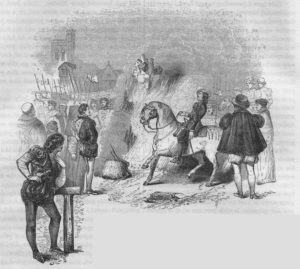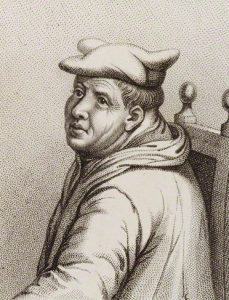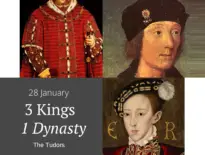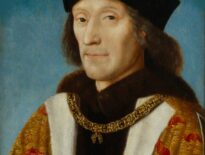 On this day in 1556, Bartholomew Green, a Protestant lawyer, paid the ultimate price for his beliefs: death.
On this day in 1556, Bartholomew Green, a Protestant lawyer, paid the ultimate price for his beliefs: death.
Burned at the stake at Smithfield alongside six others, Green’s story is one of unshakable faith, defiance, and courage in the face of persecution.
But how did this Oxford-educated lawyer end up on the wrong side of Queen Mary I’s laws? What role did secret communions, controversial letters, and his refusal to attend Catholic mass play in his downfall?
Bartholomew Green, or Bartlet Green as he’s sometimes known, was a gentleman and lawyer who found his faith while studying at Oxford. It was there, while listening to lectures by the Protestant theologian Peter Martyr, that Green, as martyrologist John Foxe describes, “saw the true light of God’s gospel.”
This transformative experience changed Green’s life, and his commitment to Protestantism grew stronger over time.
While studying law at the Inner Temple in London, Green continued practising Protestant rites even as Queen Mary I worked to restore Catholicism in England. At Easter 1554, Green received Protestant communion twice—first at the home of John Pullain, rector of St. Peter Cornhill, and again with Michael Renniger.
Green also refused to attend Catholic mass or confession. While this alone could have led to trouble, he pushed further by reportedly circulating anti-Mary bills smuggled into England from the Continent. These bills denounced Queen Mary and King Philip of Spain, while expressing support for Elizabeth, Mary’s Protestant half-sister.
In one letter to a friend, Green wrote the phrase, “The queen is not yet dead,” which authorities twisted into an accusation of treason.
Green was arrested and initially imprisoned in the Fleet and later in the Tower of London. When charges of treason couldn’t stick, he was interrogated on religious matters.
In his confession, Green admitted to receiving Protestant communion—both bread and wine—and denied the Catholic doctrine of the real presence in the Eucharist, stating that the bread and wine were not transformed into Christ’s body and blood but were instead symbols of grace. This belief was deemed heresy.
 Green’s trial took place under the infamous Edmund Bonner, Bloody Bonner, Bishop of London, and John Feckenham, Abbot of Westminster. Despite being treated well during his imprisonment—so much so that rumours spread he had recanted—Green held firm in his beliefs. Even when his grandfather tried to bribe him to save his life, Green refused to back down.
Green’s trial took place under the infamous Edmund Bonner, Bloody Bonner, Bishop of London, and John Feckenham, Abbot of Westminster. Despite being treated well during his imprisonment—so much so that rumours spread he had recanted—Green held firm in his beliefs. Even when his grandfather tried to bribe him to save his life, Green refused to back down.
On 15th January 1556, Green was found guilty of heresy and condemned to death.
On 27th January 1556, Green was taken to Smithfield to be burned at the stake alongside six other Protestants: Priest Thomas Whittle, Artificers John Tudson and John Went, Thomas Browne, Isabel Foster and Joan Warne, also known as Joan Lashford. The diarist Henry Machyn noted the massive crowd gathered that day, despite commands issued the night before to keep young people away.
Foxe’s Book of Martyrs describes how Green and his companions faced their deaths “most cheerfully.” As they walked to the stake, they recited verses, including:
“O Christ, my God, sure hope of health, besides thee have I none: The truth I love, and falsehood hate, be thou my Guide alone.”
They were burned together on one fire, bound to three posts.
The story of Bartholomew Green is one of steadfast faith and conviction. Despite intense pressure, the promise of bribes, and the threat of death, Green refused to recant his beliefs. His courage, and that of those who perished alongside him, reminds us of the religious turmoil of the Tudor period and the lives lost during Queen Mary I’s efforts to restore Catholicism.



Leave a Reply